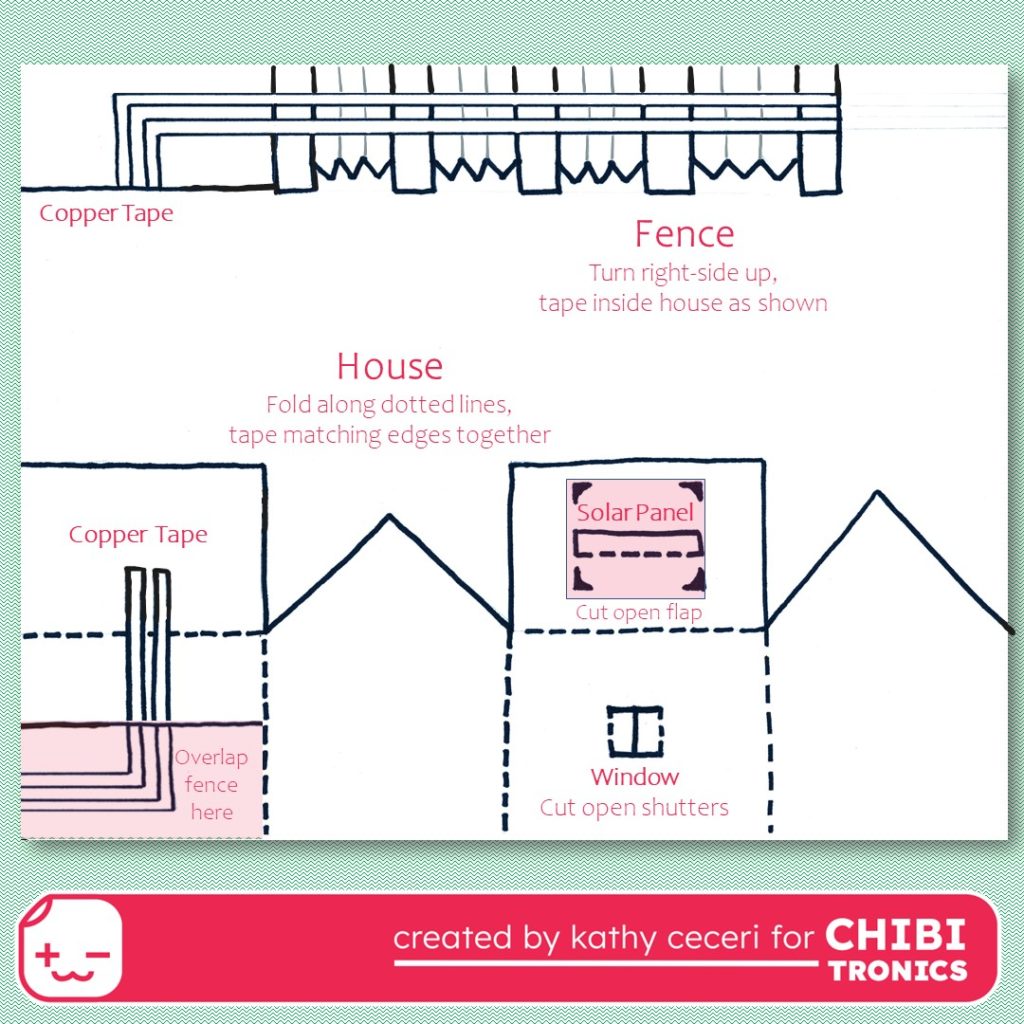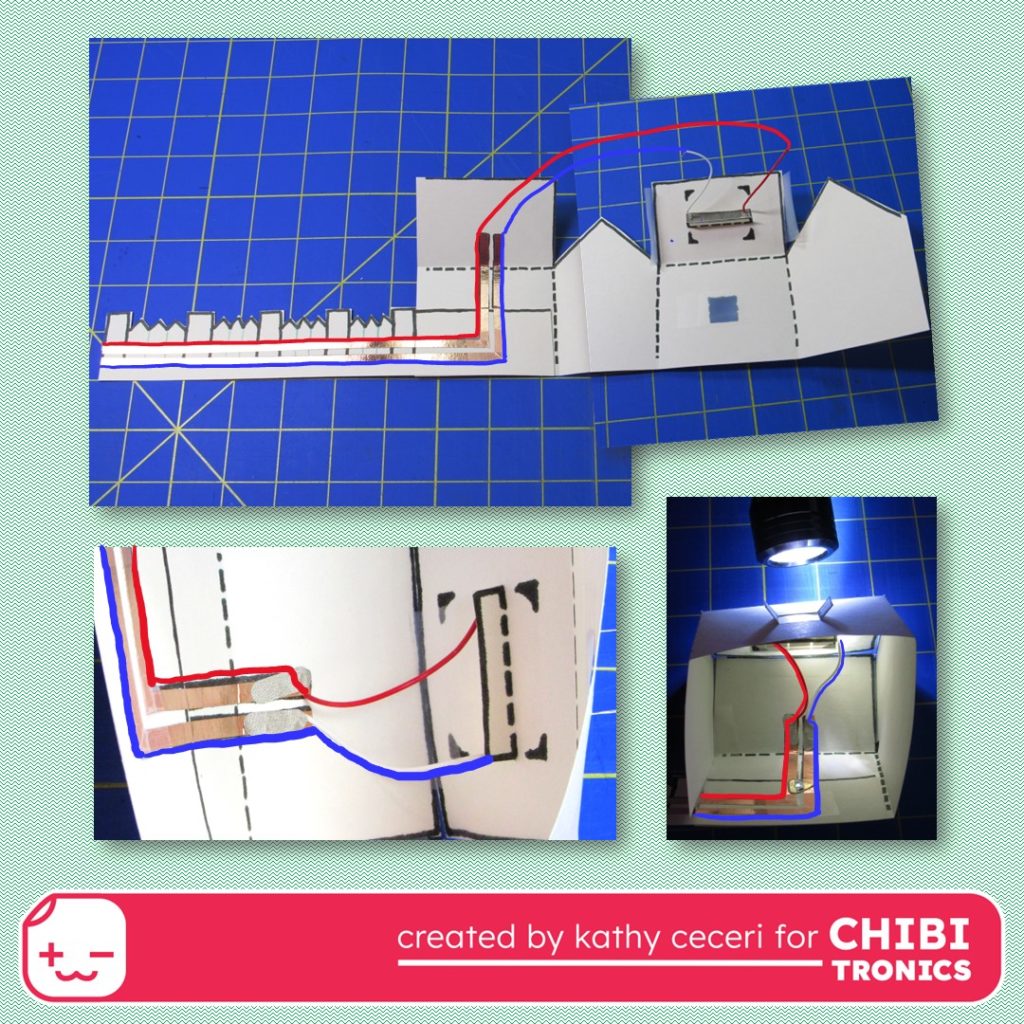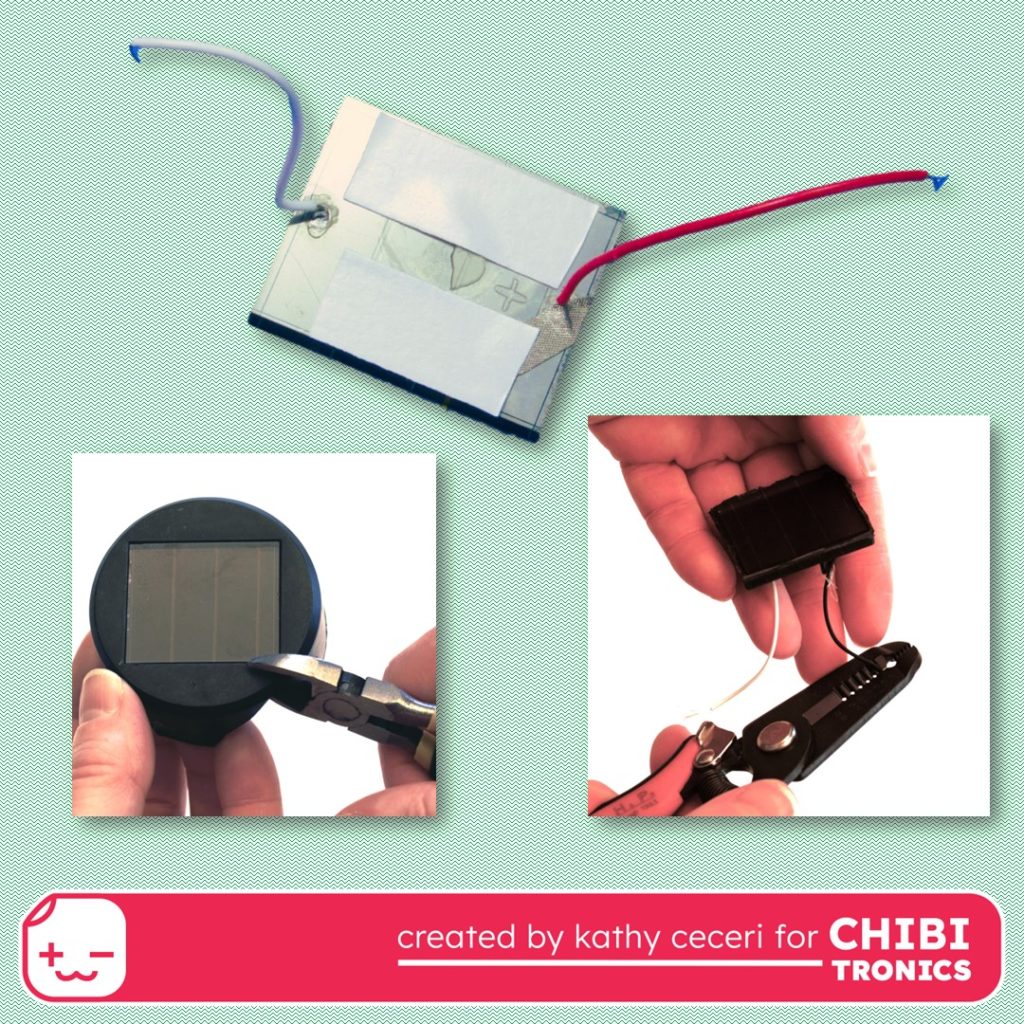Hi! This is Kathy, and I’ve got a kid-friendly project that lets you light up a paper model house and garden without batteries! To make the Circuit Sticker LEDs glow, just shine a flashlight on tiny solar panel attached to the roof, or place it under a bright lamp or in a sunny spot.

I kept my design simple enough to cut out by hand, drawing a template that fit on one sheet of 8 1/2 by 11 inch cardstock. The house contains a white LED that shines through the frosted window. The attached garden fence is decorated with red, yellow, and orange LEDs — chosen because I could get all those colors to light up, even when the amount of electricity produced by the solar panel went down. (LEDs towards the red end of the color spectrum will run on less power than colors towards the violet end, like blue.)

Find the downloadable template HERE.
To assemble the model, first I cut out the house and scored and folded the sides along the dotted lines. (The printed side is the inside of the house.) I cut out the fence and used double-sided scrapbooking tape to attach it inside the house, matching the copper foil tape lines as indicated. I cut open the window and folded the shutters out. For the frosted glass, I cut a square of opaque Scotch tape and attached it to the sticky side of a longer piece (like the pad of a bandaid). Then I covered the window opening with the double-thickness of tape. Finally, I cut open the flap for the solar panel wires and folded it in.

To make the circuit, I applied the copper tape for my circuit over the lines shown on the template, going from inside the house out to the garden fence. Instead of a battery, the positive and negative sides of the circuit are connected to the positive and negative wires on the solar panel. There’s no off-on switch — it will only turn on when there’s enough light to power the LEDs. (Don’t leave it in direct sun, you can fry the electronics!)

You can buy small 3V solar panels, but in my classes I like to show students how to liberate the panel from a cheap solar garden light. Just take the light compartment, open it with a small screwdriver, remove the battery, and cut off the circuit board inside, leaving the two wires coming out of the solar panel.
If the panel doesn’t pop out easily from the plastic compartment, you can try pulling away any hot glue holding it in, but be careful — the wires are thin and easy to break. (I accidentally broke the red wire above off the solder — the metal “hot glue” used to connect components to a circuit — but was able to re-attach it with a conductive fabric tape patch.) Alternately, you can use heavy scissors or wire cutters to cut away the plastic around the panel (safety goggles recommended).
The last step is to strip a bit of the rubber insulation off the ends of the wires to expose the metal. A wire stripper is best, but in a pinch you can use dull scissors to cut through just the insulation and pull it off.
Note: Before you connect the solar panel to your circuit, look for a plus sign (+) indicating which wire is positive. In the photo above, it’s next to the red wire. If you can’t find it, test the wires by touching them to an LED to see which way it lights up. Then mark them so you don’t get mixed up!

I used double-sided tape to attach the solar panel to the outside of the roof, as shown on the template. I pulled the wires through the flap to the inside. Then I folded up the house, taping all the corresponding edges together using Scotch tape. I used conductive fabric tape patches to connect the solar panel wires to the copper tape, then applied the Circuit Sticker LEDs. Check out the video below to see how it works!
Once you’ve got your circuit completed, you can go back and add your own decorative touches to the house, or soften the light from the LEDs on the fence by covering them with tiny paper flowers or butterflies.
I’m planning to add more science by measuring the voltage produced by the solar panel using the Chibitronics Chibi Chip and the Chibi Scope. Follow me on social media to see what develops.
Have fun with this project!
Supplies
- Copper Tape
- Conductive Fabric Tape Patches
- Circuit Sticker Lights Sampler MegaPack (30 LED Stickers) Red, Yellow, Blue, Pink, Orange, Green and White
- Solar Garden Lights
